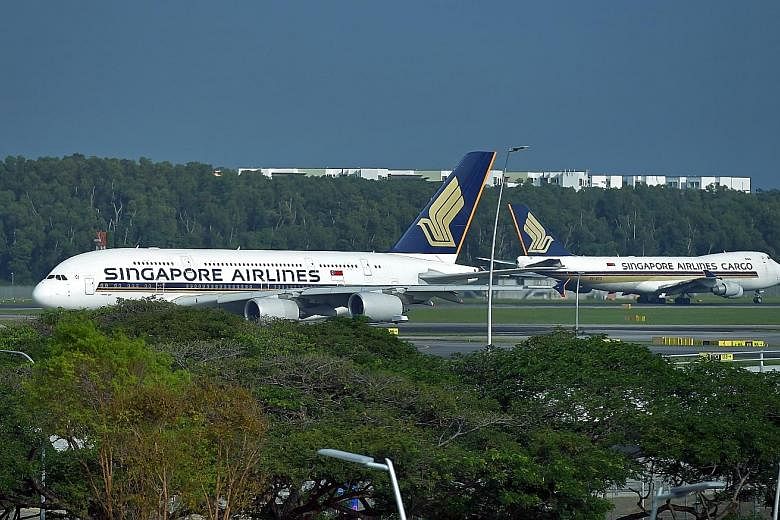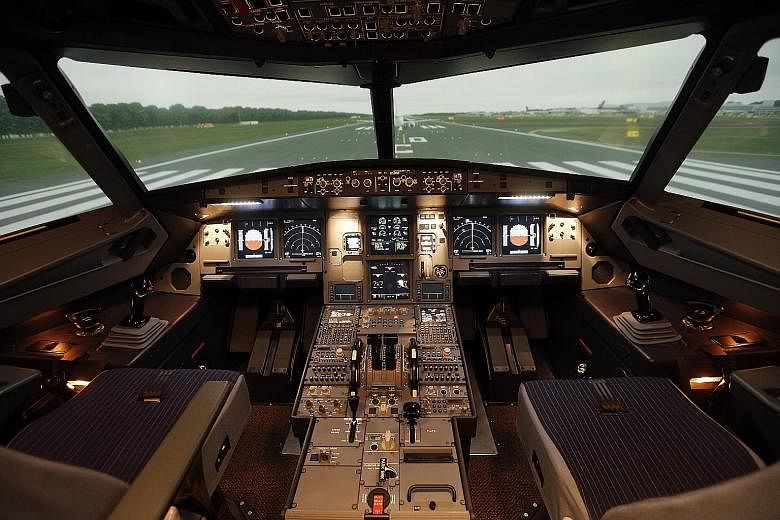Singapore Airlines (SIA) is setting up a second pilot training school, as it seeks to expand its revenue streams while cementing Singapore's position as a centre for aviation training in the region.
The plan is to partner CAE Inc - a global provider of aviation training - to set up a new flight school in a 50:50 deal, the carrier said yesterday.
Slated to take off later this year, the facility will operate out of the current Singapore Airlines Training Centre near Changi Airport.
It will, for a start, provide simulator training for Boeing aircraft types to support SIA's training needs as well as the needs of other carriers in the region.
SIA will transfer all four of its full-flight Boeing aircraft simulators to the venture, while additional CAE-built training equipment will be acquired progressively.
In April 2016, SIA opened its first pilot training school at Seletar Aerospace Park, in a joint venture with plane-maker Airbus. When fully operational by 2019, the 9,250 sq m facility will be Airbus' biggest training centre.
With strong economic growth expected in the Asia-Pacific, the demand for air travel is set to boom in the coming decades.
-
255k
Up to this number of new pilots will be needed in the coming decade, to support an expected doubling in the size of the commercial aviation sector, according to CAE.
Airlines are gearing up with huge aircraft orders which will increase the demand for pilots, experts say.
Travel boom to fuel demand for pilots
In a report in June, CAE said - in its first such forecast - that up to 255,000 new pilots will be needed over the coming decade, to support an expected doubling in the size of the commercial aviation industry.
Singapore, anticipating the demand, is keen to expand its aviation training facilities, government agencies here, including the Economic Development Board and JTC, have said.
When Seletar Aerospace Park was being planned, for example, aviation training was identified as one of the key sectors of growth, on top of the traditional aircraft maintenance and repair services.
Singapore, with its extensive air links which makes it easily accessible, is well placed to be a regional training hub, analysts said. While countries like China also have pilot training schools, they mainly serve local carriers.
Mr Shukor Yusof of Endau Analytics said SIA's initiatives will benefit both the carrier's interests and larger national ones. Not only is it "a sound investment that will likely augment SIA's income away from traditional bread-and-butter passenger revenue, "it also makes Singapore the destination of choice for aviation education".
The airline's chief executive, Mr Goh Choon Phong, said the move is "in line with our push to drive revenue generation from new adjacent businesses".
SIA has been seeking to change. Apart from launching Scoot in 2012, it also has a 49 per cent stake in Indian carrier Vistara.
Mr Goh said in May that SIA was undertaking a major review of its business and was open to shifting the balance of power away from its trademark premium carrier to its regional and budget airlines if necessary.
Last month, SIA reported a return to profit in the three months ended June, after a surprise loss in the quarter before that. All its divisions posted operating profits, which helped boost net income to $235 million.



